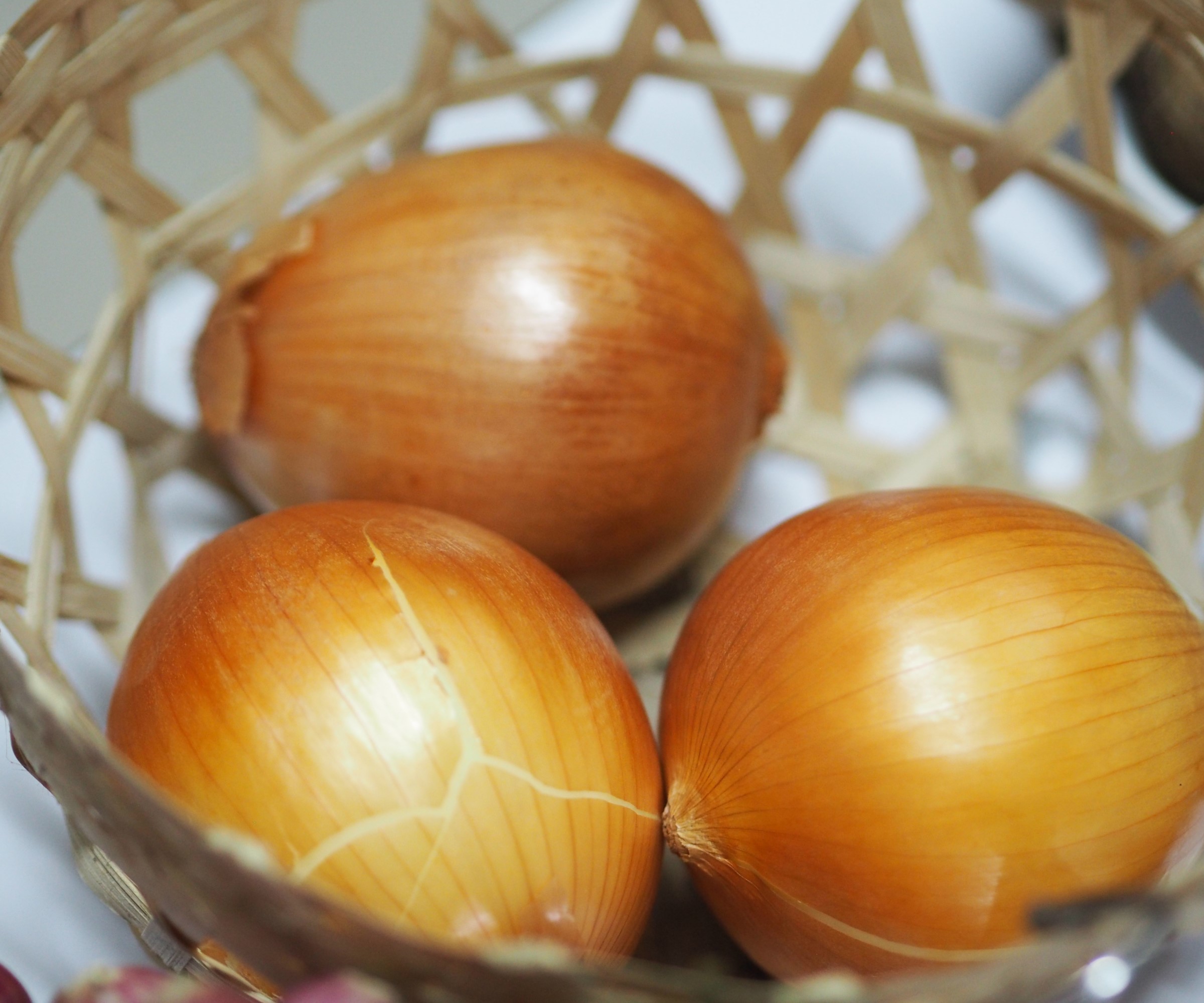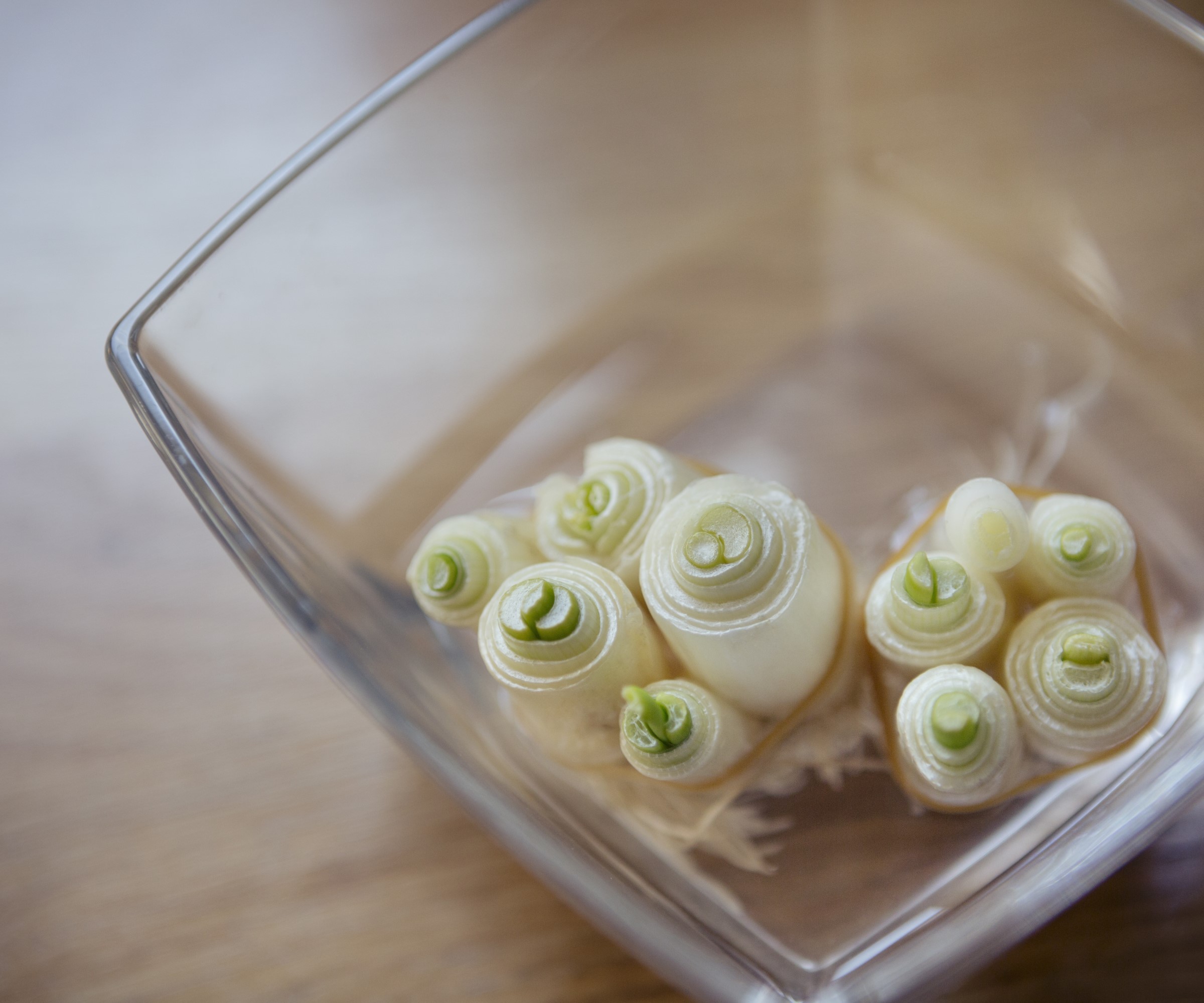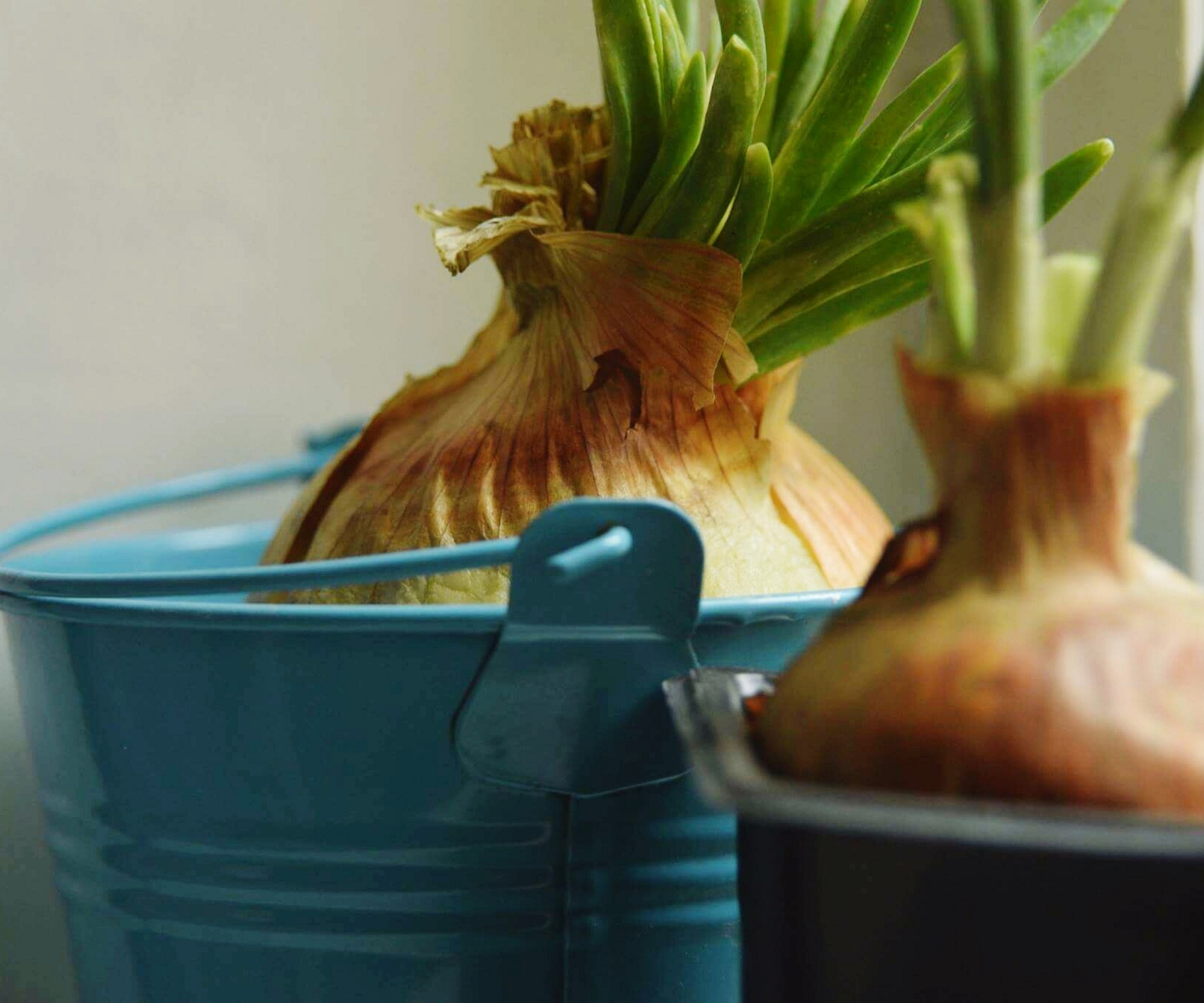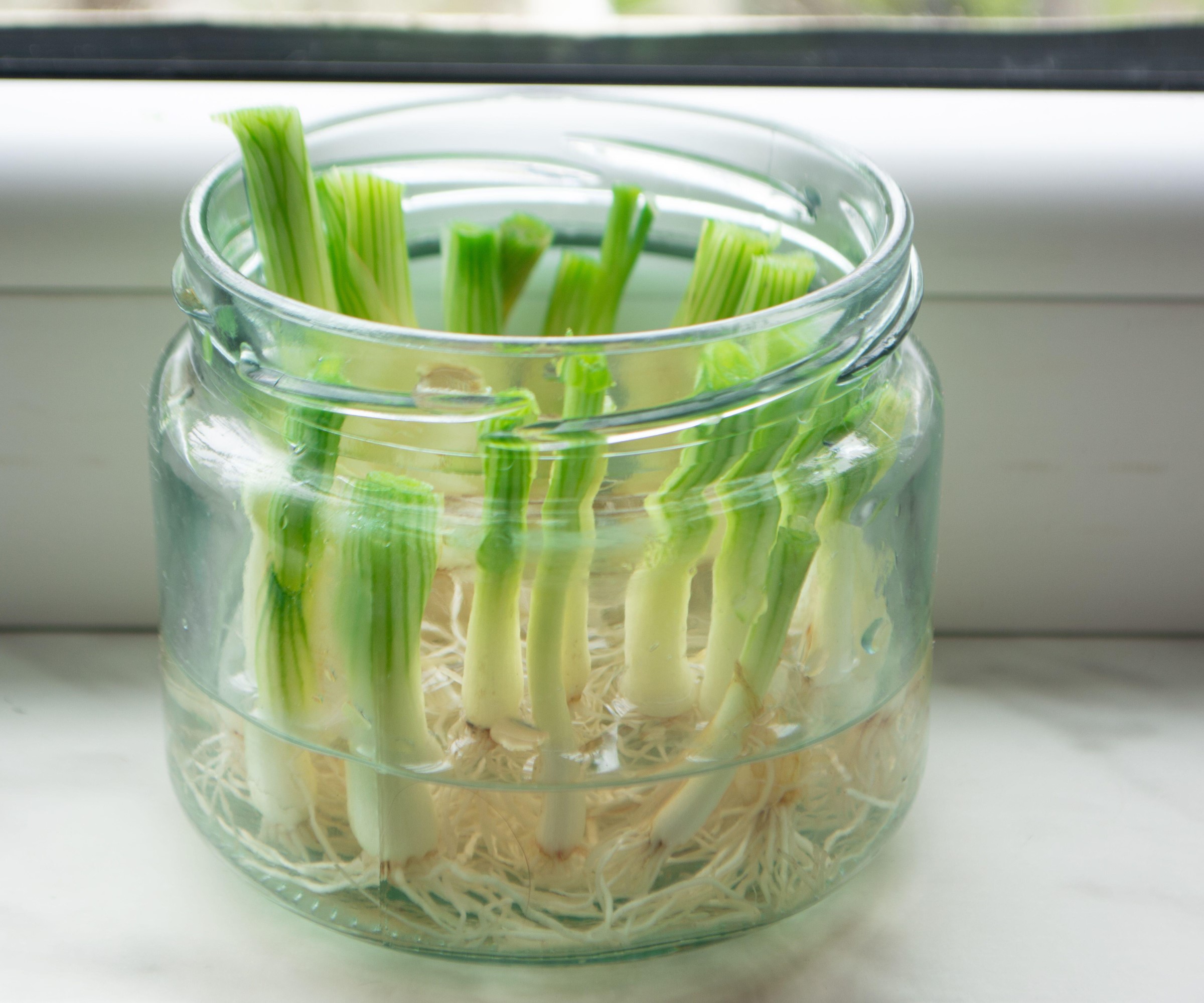Growing onions from scraps – how to get vegetables for free
It is so simple to get a steady supply of onions from off-cuts, growing them either inside the home or outside in your yard


There are many vegetables that can be easily grown from bits that may otherwise just be thrown in the trash. Growing onions from scraps presents a great opportunity for anyone wanting to save money and grow food from what many consider waste.
Onions are a kitchen staple and can be re-grown simply with just a little soil outdoors or in a pot on a windowsill. They can even be sprouted without the need for any dirt by growing the onions in water.
Growing onions offers the chance to cultivate a wider range of bulbs that you may find in regular stores. There are varieties of onions out there for any desire or dish. Sprouting your chosen onions creates a chance to find your favorite and keep re-growing a supply.

Onions are traditionally harvested in summer and fall

Drew is a journalist and former professional kitchen gardener and has spent years working in productive gardens growing vegetables for chefs. He is passionate about homegrown produce and has spent over a decade growing edibles, both in the gardens he worked in and at home.
How to grow onions from scraps in 4 easy steps
It is very simple to regrow onions from scraps and you only need a small sliver of onion to use as a starting block. This can be done with onions bought from stores or ones grown in your own vegetable garden.
- Cut off the root end of an onion with a thickness of around half an inch.
- Place it roots-side down in a pot with soil and cover with a thin layer of soil.
- Keep the soil moist and the onion scraps should start putting out shoots within three weeks.
- The shoots can either be harvested as onion greens or the rooted onion can be transplanted to a container outdoors or to your vegetable garden.
Jo Ellen Meyers Sharp, garden writer and speaker known as the Hoosier Gardener from Indianapolis, says: ‘You can do this anytime you have scraps from onions. They can be grown on a sunny windowsill, and transplanted to a container outdoors or to the garden.’
It is possible to bypass the indoor pot phase completely and plant onions straight out in the garden. Take the section of onion, push it root-end down into the surface of the soil and cover with a thin layer of dirt, and water to get it sprouting. The onion can grow in situ.

Onions are a staple ingredient in many global cuisines
Growing onions from scraps in water
It is possible to do a very similar process as above, only without the need for any soil or compost as onions can be grown in water from scraps.
Design expertise in your inbox – from inspiring decorating ideas and beautiful celebrity homes to practical gardening advice and shopping round-ups.
Take the root end of an onion like above and place it in a bowl or other container, sitting in an inch or two of water. It must be sitting in the water and not fully submerged. Place the container with the onion in on a sunny windowsill to start sprouting.
An alternative option is to use cocktail sticks that can be placed into the sides to allow the onion to rest on top of a jar filled with water, so the base of the onion touches the liquid. Replace the water to keep it fresh and roots should start sprouting out of the onion within a week. This sprouting onion can be planted up to grow on.

Scallions are quick and simple to sprout in water
Growing green onions from scraps
Green onions, also known as scallions or bunching onions, are also incredibly simple to grow from the scraps that are commonly thrown away. Like with bulb onions, green onions can also either be grown from scraps in the soil or in water.
When grown in the soil it couldn’t be any simpler, as Jo Ellen Meyers Sharp explains: ‘After you’ve chopped off the green parts, plant the bulb end with the roots in the soil. The onion will regrow and you can harvest it as it does.’
To grow green onions in water, leave about two inches of the white bulbs with the roots intact. Place these ends root-down in a small jar or glass and add enough water to cover the roots. Place on a sunny windowsill to grow and it should take only a few days for the first green shoots to appear. Replace the water regularly when it discolors.
When the shoots reach around five inches long, it is time to plant them either in the ground or into a container. It is vital to plant the new shoots as they cannot grow strongly in just water for a long time and the green onions will grow thin and weaker.

Onions can be grown in containers with great success
What is the best time of year for growing onions from scraps?
Regular sprouting of onions from their scraps can ensure you a supply of onions for all your culinary needs. With a little bit of forward-thinking, it is therefore possible to sprout some onions for bulbs and some onions for a quick harvest of delicious onion greens. Sprouting onions quickly to get onion greens can be done throughout the year, though growing onions through to bulbs is more suited to certain times of year.
So when is the best time to sprout them to plant outside? Spring and early summer is the ideal time to plant sprouted onions outdoors so they can get the six to seven hours of daily light required during summer to grow into healthy and sizable bulbs. It is possible to sprout onions to plant out during fall and winter as they are hardy plants, but the plant is highly liable to bolt in the spring.
Talking on the best conditions to plant sprouted onions in, Samuel J Schmitz, display gardens horticulturist at The Gardens at Ball in West Chicago, Illinois, says: ‘Onions are full-sun, heat loving plants. Place them in tilled soil in a bright, warm spot and they will do well.’
Onions can be grown indoors throughout the year and artificial lights can be used to supplement any lack of natural light. Growing onions in containers is a great way for anyone short of outdoor space to get their own homegrown bulbs.

Bunching onions can be sprouted multiple times
How long does it take to grow onions from scraps?
It can take a little bit of patience to grow onions from scraps if you want your sprouted section to develop into another onion. Start sprouting an onion on a windowsill and you can expect to wait between 90 and 120 days until it is time to harvest the onion.
The timeframe is a lot shorter if you are sprouting for onion greens, these can be harvested within a few weeks. Scallions can take under six weeks to go from sprouting to being ready for cropping. Green onions can even be re-sprouted multiple times from the same root, either in water or in soil. Up to five times is doable before the energy is exhausted and any growth that will sprout is too weak.
My onion has sprouted – can I plant a whole onion?
If you have an onion that is sprouting that you bought at a store, or a stored onion that has started shooting, then you can plant that whole onion, but you will not get onions from it. If you plant an entire onion you will just get green onion sprouts to harvest.
To grow new onions, then it is better to gently separate the sprouts from inside the layers of the onion as each of these can grow into a new onion. Either place these sprouts in water until roots grow or plant them separately out into the soil around 1-1.5 inches deep.

Drew has worked as a writer since 2008 and was also a professional gardener for many years. As a trained horticulturist, he worked in prestigious historic gardens, including Hanbury Hall and the world-famous Hidcote Manor Garden. He also spent time as a specialist kitchen gardener at Soho Farmhouse and Netherby Hall, where he grew vegetables, fruit, herbs, and cut flowers for restaurants. Drew has written for numerous print and online publications and is an allotment holder and garden blogger. He is shortlisted for the Digital Gardening Writer of the Year at the 2025 Garden Media Guild Awards.